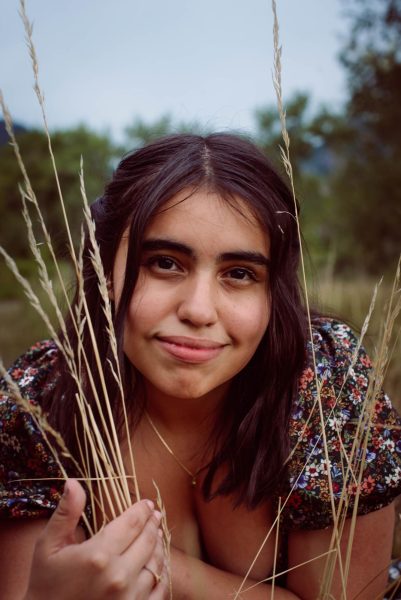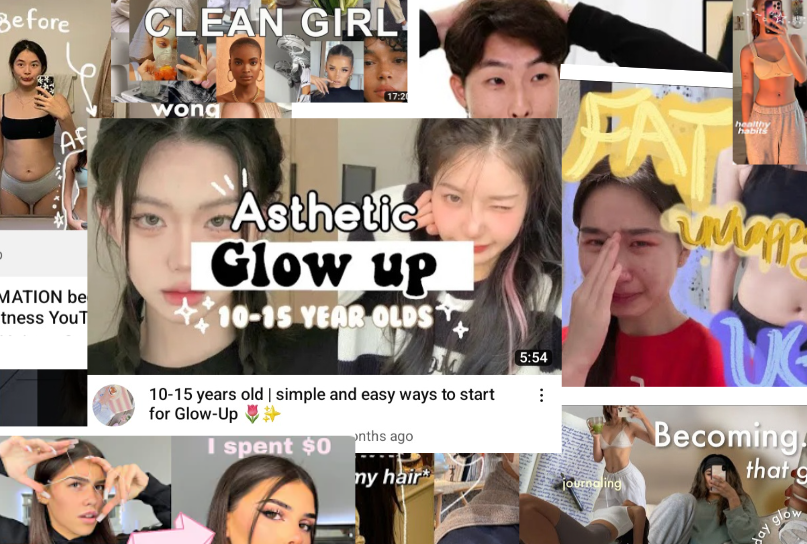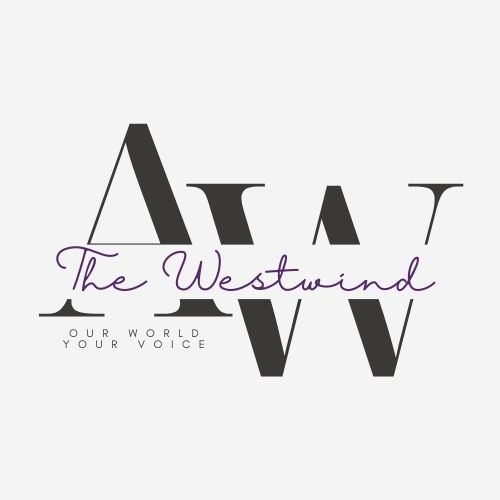Our obsession with appearance: The issues with glow ups
Beauty, beauty, beauty! The perfect face, body, outfit, and aesthetic! Our online life continues to cater to an idea of the “perfect” reality, with a not-so-perfect meaning. While it may appear as harmless trends to some, the deeper meaning behind social media’s “glow up,” continues to be a massive playing card in the contribution of larger issues.
It is no secret that the internet is the future of our world, as everything is digital. With social media and an unrealistic beauty standard in the hands of millions of teens everyday, it’s apparent that insecurities are highly driven from what they see on social media.
King University reports, “… 87% of women and 65% of men compare their bodies to images they consume on social and traditional media… a stunning 50% of women and 37% of men compare their bodies unfavorably.”
While there is nothing wrong with wanting to become a better version of yourself, there is an issue when it comes to saying how becoming more “attractive” makes your life “better”. Did they really “glow up” or just grow up? Why should our bodies make us feel a certain way about ourselves? Can’t we just appreciate our bodies for functioning, instead of the way they appear?
At a time in life where someone is figuring out who they are, commonly pushed ideas, such as the online “glow up”, is extremely harmful to any developing person. However, glow ups and other beauty conformity ideas cause most harm to women or feminine presenting people, because it enforces the patriarchal idea of their worth being tied to their appearance.
While the beauty standard continues to be negative for people of all races, it affects people of color at a significantly higher rate because it is Eurocentric. This makes the idea of being “beautiful ”harder for people of color to “achieve” or conform to. Therefore, this affects people of color differently than it does to white people, and is one way racism within the beauty standard exists.
Arvada West High School Junior, Briana Topete explains, “I’m Hispanic. It’s weird you see all of these things on Instagram and Social media in general, of all of these outfits and bodies that are really thin with blonde hair and pale faces. It’s seen as the beauty standard.”
She continues, “For me, I am a little bit darker and I don’t have a thin face or body, I have curves. I struggle with that. I compare myself with people I see at Arvada West and on social media, anywhere really. It’s been difficult seeing the difference between me and what is supposed to be the beauty standard.”
Beauty standards also tend to take a toll on people of color’s relationships with their culture. Junior Lance Yang adds,“This past weekend I went to a traditional Hmong New Years party, and we had to wear our cultural clothing. It was awkward because I didn’t want to wear it and wanted to wear non-cultural clothing.”
Yang also says, “White supremacy exists, especially in America. It’s all around. People of color are minorities and because we are, we have to fit in with the majority. It’s like if you don’t fit in, you stand out, so there is more pressure to fit in.”
One aspect that is often seen as a part of “glowing up” is having a certain aesthetic. An aesthetic that has been popular is the “clean girl” look. Some features of this aesthetic include feathered eyebrows and gold hoop earrings. These parts of the aesthetic have notably come from the culture of women of color, and social media continues to uplift this look while crediting famous white women such as Hailey Bieber.
Topete says, “It’s weird because in the past, we have been ridiculed for the color of our skin, what we wear and our culture. Now it is seen in a positive way… There is definitely a glorification and romanticization of certain cultures that is on the rise. It’s like this is an aesthetic now! Since when? This is what we have always done, it’s how we express ourselves. Now they are taking our fashion, making it into an aesthetic and it’s uncomfortable.”
Youtube has been another social media platform where glow up videos have been popular in the past couple of years. In these videos, the creator usually is trying to “glow up” within a certain amount of time, typically spending thousands of dollars to achieve a said “glow up”. It is certainly a privilege to be able to do this, and “glow up” culture doesn’t account for the economic facet of “beauty”.
Statista says that, “Revenue in the Beauty & Personal Care market amounts to US$528.60bn in 2022. The market is expected to grow annually by 4.64%.”
It is obvious that there is a consumerism issue, but women of color reportedly spend more money towards beauty products than white people. The Guardian states, “…. the US found that black women spend nearly nine times more than their Caucasian counterparts on hair and beauty – mainly on niche brands targeting this demographic; brands that are generally sold in beauty supply stores in “ethnic” areas”.
This is yet again another way the beauty standard and industry attacks people of color, despite them being statistically poorer than those that are white.
Needless to say, beauty is power, not only to those that are considered beautiful, but it brings more power to societal issues. Of course, glow ups aren’t the only thing to blame, but until people acknowledge the ways in which it perpetuates systematic problems harming groups that are already targeted, there will never be acceptance for all forms of beauty. It takes a lot to dismantle systematic issues, but we can begin by appreciating our bodies not for the way they look, but for the ways they let us live. At the end of the day, our differences are what make us beautiful and no social media trend can determine our worth.

Chloe Rios is a senior this year and has been on staff for three years. In her free time, Chloe loves to paint, listen to Taylor Swift, and spend time...



